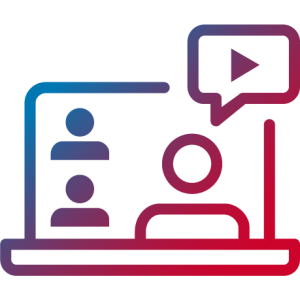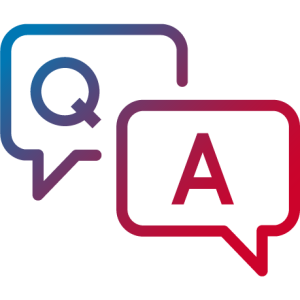EdaMove 4 – EDA and Activity Sensor
As part of the new sensor generation, the EdaMove 4 takes the proven quality of the EdaMove 3 and incorporates the most sought after improvements from extensive discussions with researchers in the field.
The 4th sensor generation offers researchers numerous advantages, including:
- New design for optimal handling: The improved case offers a sleek design aesthetic offering many practical advantages. The waterproof and dirt-repellent housing coupled with the improved carrying systems make the sensors simpler, more versatile and safer to use.
- More data collection capabilities: Thanks to the integration of the latest technologies, the 4th generation sensors now incorporate a Gyroscope (Angular Rate Sensor).
- Improved analysis possibilities: Our highly acclaimed acceleration sensor also received an overhaul, and now records the measurement data at an even higher resolution. Consequently, we’ve achieved significant improvements in the obtainable results, especially in the analysis of sedentary behavior and non-wear detection.
- Increased data retention: A new Bluetooth buffer ensures the preservation of data during disconnection, with the buffered data transferred upon reconnection; thus guaranteeing a continuous data recording at all times.
- Broader research applications: Already a class leader in quality data acquisition for many research areas, these improvements expand the EdaMove 4's research capabilities. All the while remaining the best choice for researcher's requiring high quality ambulatory EDA and physical activity data.
The EdaMove 4 provides researchers with the most comprehensive tool for recording and analysing Electrodermal (Galvanic Skin Response) and physical activity. The sensor combines our world-class 4th generation accelerometer, a high-quality EDA sensor and a Bluetooth Smart interface that allows the sensor to interact with our Experience Sampling platform, movisensXS to trigger questionnaires based on changes in physiological parameters.
Capable of capturing up to 4 weeks of data, the EdaMove 4 allows researchers to isolate and understand emotional affect with greater clarity than before. A new electrode based attachment system ensures an efficient and durable connection, recording a high quality signal with minimal effort. In addition to the EDA signal that allows the calculation of secondary parameters like skin conductance level (SCL) and skin conductance responses (SCR), the sensor acquires the raw data of the 3D acceleration of a participant, thus also allowing the calculation of activity parameters such as activity intensity with the movisens DataAnalyzer.
The additional recording of angular rate, temperature and barometric air pressure enable the swift discovery of and isolation of many of the typical artifacts that plague EDA data captured by standard ambulatory measurement systems. The EdaMove 4 connects to a comfortable textile band worn on either the wrist or ankle, increasing participant comfort and compliance, and providing greater measurement quality for researchers.
Top-Features
- New design with new carrying systems in a waterproof housing
- Advanced data acquisition through integrated gyroscope
- New acceleration sensor with higher resolution
- Meets all relevant EDA standards
- Live analysis of measurement data
- Improved data transfer via Bluetooth Smart interface
- Exact and validated Energy Expenditure calculations and detection of everyday activities
- Java API for USB (Windows)
- API: Example implementation for Bluetooth Smart (Android)
Applications
- Interactive ambulatory assessment
- Mobile long-term monitoring of EDA (elecrodermal activity) / GSR (galvanic skin response)
- Psycho physiologic monitoring
- Research of the autonomic nervous system (ANS)
- Behavioral monitoring
- Clinical Psychology
- Affective Computing
Matching products and services

SensorTrigger
movisensXS-Feature for Interactive Assessment
Activity triggered eDiaries and Event Contingent Sampling
Downloads
| Newsletter |
|
|---|---|
| Software |
|
| Documentation and Support | |
| External Tools |
Technical Data
| Power supply | Lithium-Polymer-Battery |
| Battery voltage | 3,7 V |
| Number of charging cycles | 300 (with 1C/1C > 80%) |
| Internal memory | 4 GB |
| Maximum recording capacity | 4 Weeks |
| Battery run time | ~ 4 days |
| Recharging time | ~ 1 hour |
| Size of sensor (W x H x D) | 62,3 mm x 38,6 mm x 11,5 mm |
| Weight of sensor | 26 g |
| Protection rate | Waterproof (IP64) |
| Internal sensors | EDA Sensor: Exosomatic method, constant voltage, DC, 0,5 V Resolution: 14 bit, Input range 2 µS -100 µS Bandwith: DC - 8 Hz Output rate: 32 Hz 3D acceleration sensor: Measurement range: +/- 16 g Output rate: 64 Hz Rotation rate Sensor: Measurement range: +/-2000 dps Resolution: 70 mdps Output rate: 64 Hz Pressure sensor: Measurement range: 300 - 1100 hPa Resolution: 0,03 hPa Output rate: 8 Hz Temperature sensor: Output rate: 1 Hz |
| Live analysis | Skin Conductance Level Movement Acceleration Step count |
| Indicators | LED, 3-color Vibration alarm |
| User Interfaces | Marker (tapping) |
| Interfaces | Micro-USB, Bluetooth Smart (4.0) |
| API | Java API für USB (Windows) Example for Bluetooth Smart (Android) |
| Wear locations | Wrist, Ankle |
| Wearing systems | Wrist Band |
| Environmental conditions | Temperature: -20 °C - 60 °C 0 °C - 45 °C during charging Atmospheric pressure: 300 to 1200 hPa absolute |
| Warranty | 2 years |
Literature und Validation
- Evaluating Team Workload Through Physiological Synchrony: An Exploratory Study Using MdRQA Data to Assess Teams in Action.
- Applying artificial intelligence on EDA sensor data to predict stress on minimally invasive robotic-assisted surgery.
- The use of music for Solace, its connection to Openness and its moderating effects on music listening and stress.
- Studying the Influence of Single Social Interactions on Approach and Avoidance Behavior – A Multimodal Investigation in Immersive Virtual Reality.
- Seven robust and easy to obtain biomarkers to measure acute stress.
- Social Conditioning in Immersive Virtual Reality Elicits a Hypervigilant-Avoidant Response Pattern.
- Predicting the onset of psychotic experiences in daily life with the use of ambulatory sensor data – A proof-of-concept study.
- 3. OBJECTIVE ANALYSIS AND COMPARISON OF STRESS LEVEL DURING ROBOTIC AND CONVENTIONAL LAPAROSCOPIC SURGERY.
- Physiological synchrony in brain and body as a measure of attentional engagement.
- Understanding the combined effects of sleep deprivation and acute social stress on cognitive performance using a comprehensive approach.
- Analysis of EDA and Heart Rate Signals for Emotional Stimuli Responses.
- Human uncertainty in interaction with a machine: establishing a reference dataset.
- The connection between stress, density, and speed in crowds.
- Approaches, Applications and Challenges in Physiological Emotion Recognition—A Tutorial Overview.
- Untersuchungen zur Integration objektiver Messgrößen in ein Virtual-Reality-Studiendesign zur Evaluation subjsubjekt Eindrücke von Fahrzeuginnenräumen.
- Pedestrian Crowd Management Experiments: A Data Guidance Paper.
- Physiological and neural synchrony in emotional and neutral stimulus processing: A study protocol.
- Robustness of Physiological Synchrony in Wearable Electrodermal Activity and Heart Rate as a Measure of Attentional Engagement to Movie Clips.
- Tranquillity, transcendence, and retreat: the transformative practice of listening at Evensong.
- At Crossroads in a Virtual City: Effect of Spatial Disorientation on Gait Variability and Psychophysiological Response among Healthy Older Adults.
- The Effects of Stimulus Duration and Group Size on Wearable Physiological Synchrony.
- Can Music-evoked autobiographical memories be triggered through music recommendation.
- Waiting Behavior and Arousal in Different Levels of Crowd Density: A Psychological Experiment with a “Tiny Box”.
- Current trends and opportunities in the methodology of electrodermal activity measurement.
- Validation of wearables for electrodermal activity (EdaMove) and heart rate (Wahoo Tickr).
- Heart rate variability, postural sway and electrodermal activity in competitive golf putting.
- How does it feel to walk in Berlin? Designing an Urban Sensing Lab to explore walking emotions through EDA sensing.
- Assessing the difficulty of annotating medical data in crowdworking with help of experiments.
- Towards the Applicability of Measuring the Brain Activity in the Context of Process Model Comprehension.
- Moments that matter? On the complexity of using triggers based on Skin Conductance to sample arousing events within an Experience Sampling Framework.
- Evaluating Usability Aspects of a Mixed Reality Solution for Immersive Analytics in Industry 4.0 Scenarios.
- Social anxiety is associated with heart rate but not gaze behavior in a real social interaction.
- Measuring Behavior 2020-21.
- Physiological synchrony in EEG, electrodermal activity and heart
rate reflects shared selective auditory attention. - A Comparison between Laboratory and Wearable Sensors in the Context of Physiological Synchrony.
- A Usability Study of Physiological Measurement in School Using Wearable Sensors.
- Using Virtual Reality Scenarios Along With Physiological Measures as Intervention Procedure in Patients With Dementia.
- Applicability of Immersive Analytics in Mixed Reality: Usability Study.
- Electrodermal activity patterns in sleep stages and their utility for sleep versus wake classification.
- A mixed-methods study of physiological reactivity to domain-specific problem solving: methodological perspectives for process-accompanying research in VET.
- Estudo piloto em câmara climática: efeito da luz natural em aspectos de saúde e bem-estar não relacionados à visão.
- Detecting cognitive underload in train driving: A physiological approach.
- Mobile Sensors for Multiparametric Monitoring in Epileptic Patients.
- A personalized and reconfigurable cyberphysical system to handle multi-parametric data acquisition and analysis for mobile monitoring of epileptic patients.
- Evaluation of environmental effects on the measurement of electrodermal activity under real-life conditions.
- Komfortgewinn für Passagiere auf Langstreckenflügen durch den Einsatz chronobiologisch angepasster LED-Kabinenbeleuchtung.
- Publication recommendations for electrodermal measurements.
You can find more publications here.













